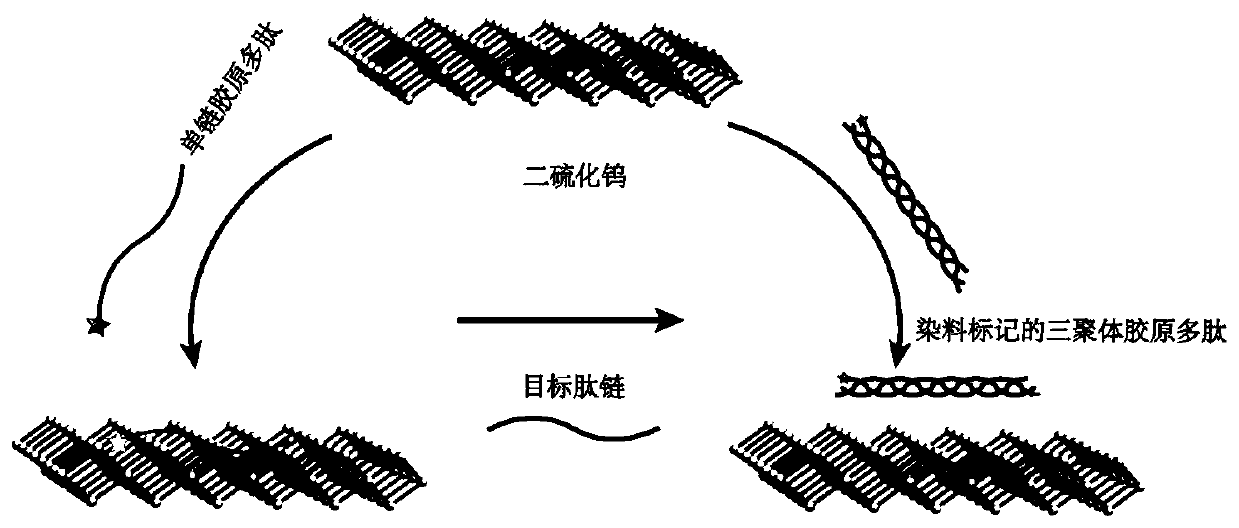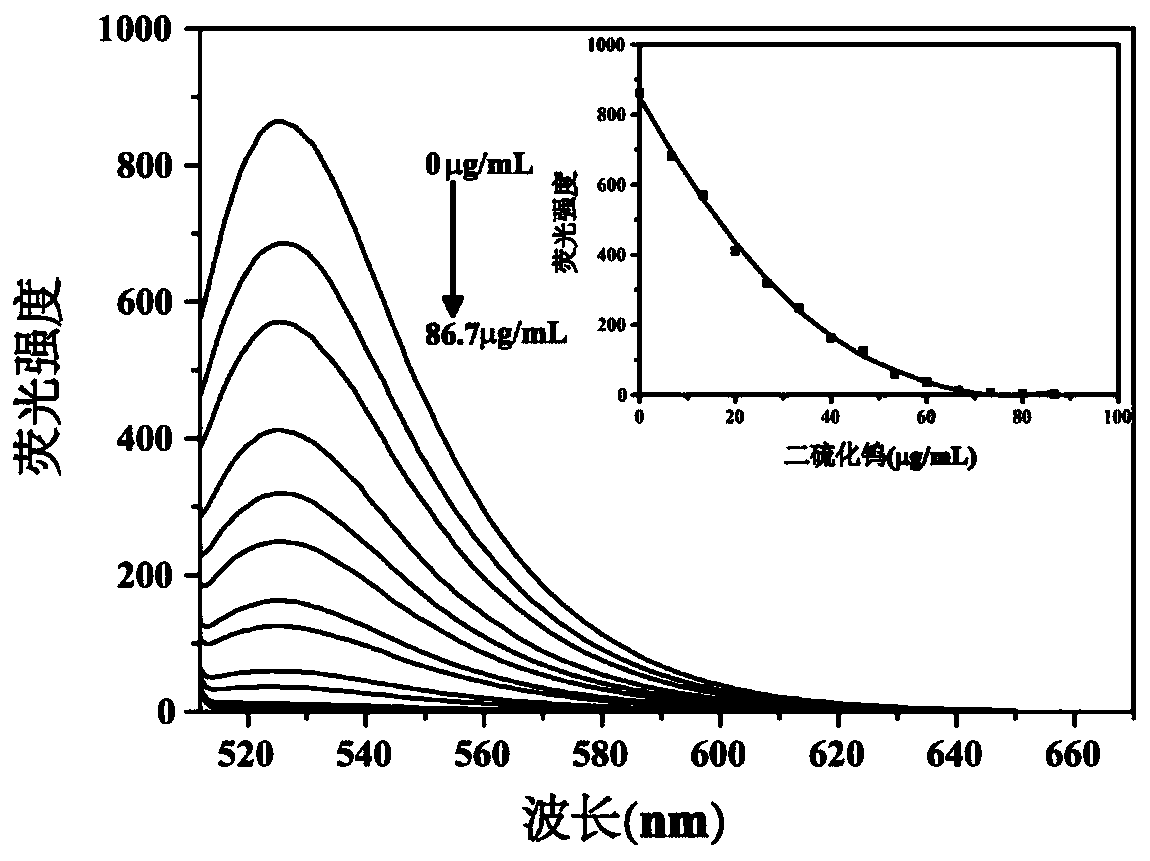A Method for Detecting Collagen Triple Helix Structure Using Disulfide Nanomaterials
A nanomaterial and disulfide technology, which is applied in material testing products, analytical materials, biological tests, etc., can solve the problems of cumbersome time-consuming, low specificity, weak affinity, etc., and achieves low cost, high sensitivity, and strong specificity. Effect
- Summary
- Abstract
- Description
- Claims
- Application Information
AI Technical Summary
Problems solved by technology
Method used
Image
Examples
Embodiment Construction
[0035] The present invention will be further described in detail below in conjunction with the accompanying drawings, so that those skilled in the art can implement it with reference to the description.
[0036] It should be understood that terms such as "having", "comprising" and "including" used herein do not exclude the presence or addition of one or more other elements or combinations thereof.
[0037] One of the embodiments of the present invention provides a method for detecting collagen triple helical structure using disulfide nanomaterials, comprising the following steps:
[0038] 1. Preparation of disulfide nanomaterials:
[0039] Using ammonium paratungstate as raw material, the precursor of ammonium thiotungstate is prepared through acid dissolution, ammonia dissolution, hydrogen sulfide saturation, washing, crystallization and other processes; thermal decomposition method is used to prepare tungsten disulfide nanomaterials with nanoscale layered structure, see fi...
PUM
| Property | Measurement | Unit |
|---|---|---|
| concentration | aaaaa | aaaaa |
Abstract
Description
Claims
Application Information
 Login to View More
Login to View More - R&D
- Intellectual Property
- Life Sciences
- Materials
- Tech Scout
- Unparalleled Data Quality
- Higher Quality Content
- 60% Fewer Hallucinations
Browse by: Latest US Patents, China's latest patents, Technical Efficacy Thesaurus, Application Domain, Technology Topic, Popular Technical Reports.
© 2025 PatSnap. All rights reserved.Legal|Privacy policy|Modern Slavery Act Transparency Statement|Sitemap|About US| Contact US: help@patsnap.com



